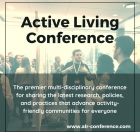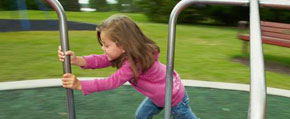We are pleased to announce an exciting new alliance between Active Living Research and GP RED to co-host and coordinate...
Children's Guide to Active Living: An Analysis of Children's Use, Negotiation and Perceptions of Their Local Environment for Physical Activity
The social and built environment of many minority children living in impoverished neighborhoods frequently fails to support their healthy development. Designing safe outdoor play environments that support children’s physical activity provides a potential mechanism for promoting their healthy development. However, virtually no research exists that examines how children themselves think about and use their neighborhood for physical activity. The goal of this project was to study how neighborhood physical and social processes affect the impact of redeveloped inner-city school playgrounds, known as Learning Landscapes, on children’s physical activity from the perspective of children and their caretakers. This study enriched another Active Living Research project, If They Build It, Will They Come? An Evaluation of the Effects of the Redevelopment of Inner-City School Grounds on the Physical Activity of Children, Principal Investigator Lois Brink. Information about the physical activity opportunities in the Learning Landscapes playgrounds and children’s neighborhoods was collected from students from 3 diverse schools from the main study. Children’s physical activity was assessed using SOPLAY, a direct observation method, aerial photography, children travel behavior diaries, and student focus groups.
uMAP Web site: A clearinghouse of information on how to conduct community mapping with and for children and youth growing up in urban areas to promote social action and neighborhood change.
Related Tools & Resources
STAY UP TO DATE
RECENTLY ADDED TOOLS & RESOURCES
MOVE! A BLOG ABOUT ACTIVE LIVING
The "Active Living Conference" aims to break down research and practice silos and...







